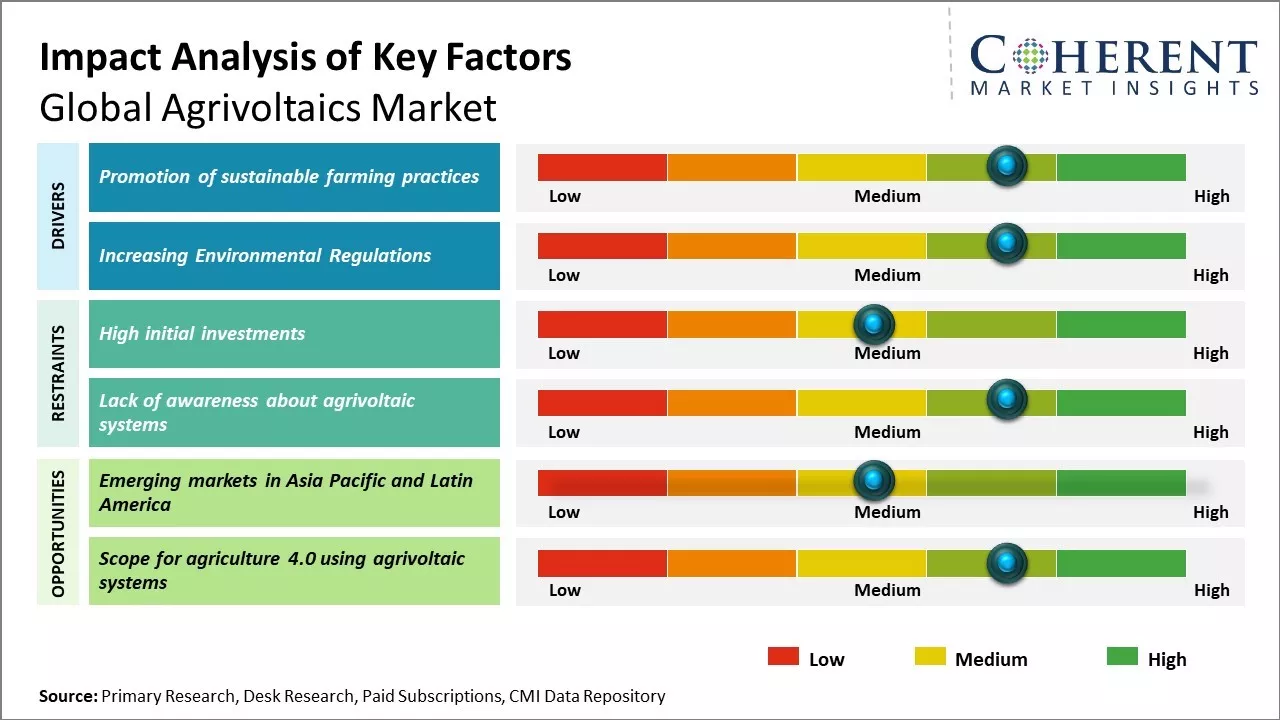The Agrivoltaics Market is estimated to be valued at USD 4.71 Bn in 2025 and is expected to reach USD 8.34 Bn by 2032, exhibiting a compound annual growth rate (CAGR) of 8.5% from 2025 to 2032.

To learn more about this report, Request sample copy
The growing need for dual use of land for energy production and agriculture is expected to drive the demand for agrivoltaics. Further, agrivoltaic systems help increase yield for certain crops by providing partial shade and protecting crops from excessive heat. They also improve water use efficiency as solar panels provide shade and influence the microclimate beneath them. Additionally, growing emphasis on sustainability and development of agro-based economies are anticipated to provide opportunities for the market. However, high initial investment and limited technical know-how may hamper the growth of the agrivoltaics market during the forecast period.
Promotion of sustainable farming practices
Rising global temperatures and changing weather patterns have made conventional farming more challenging in many parts of the world. Farmers are struggling with increased occurrences of droughts, floods, and other climate-related disruptions which damage crops and reduce farm yields. At the same time, the agricultural sector remains a significant contributor to greenhouse gas emissions that cause global warming. There is a growing need to adopt renewable energy-powered farming techniques that are less dependent on climate variations and are more environmentally sustainable.
Agrivoltaic systems which involve setting up solar panels above crop fields have emerged as a promising solution. The partial shading from solar panels creates the ideal microclimate for many crops to grow by reducing evapotranspiration and moderating temperature fluctuations. It allows more efficient use of available land resource for combined power and food production. Farmers can supplement their income from solar power sales while continuing farming under the panels. The dual use of land helps optimize land utilization and preserves agricultural areas that otherwise would be converted to large-scale solar installations. Many governments around the world are promoting agrivoltaics to make agriculture greener. Farmers are incentivized to install agrivoltaic systems through financial subsidies and policy support in order to optimize resource use as well as generate renewable energy. As more studies demonstrate the agronomic and climate adaptation benefits of this practice, agrivoltaics is likely to grow in popularity among farmers.
Joining thousands of companies around the world committed to making the Excellent Business Solutions.
View All Our Clients